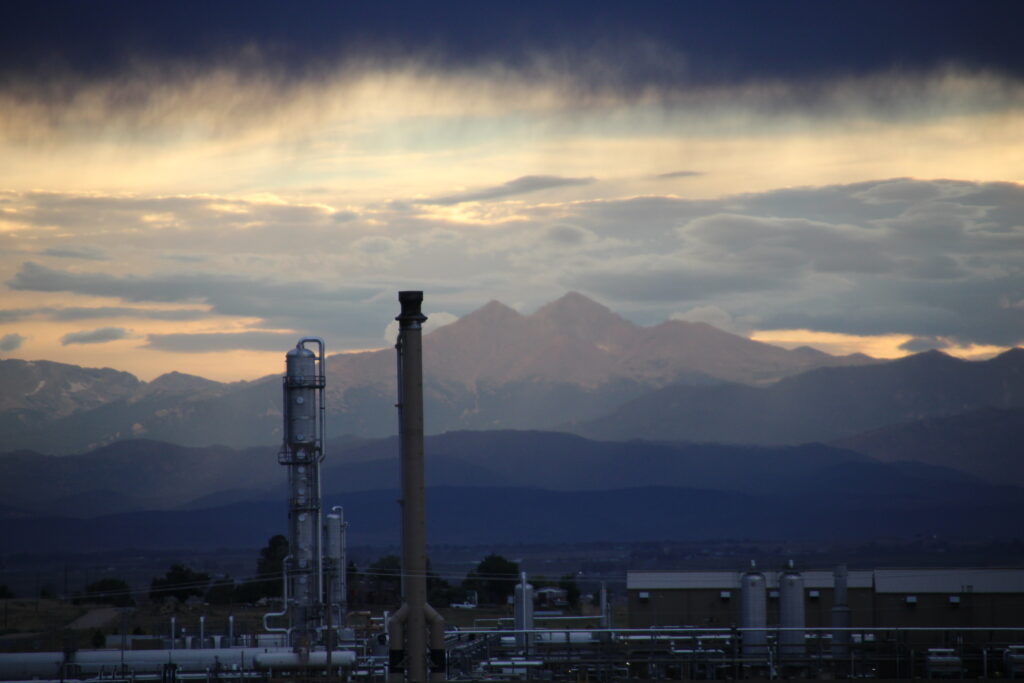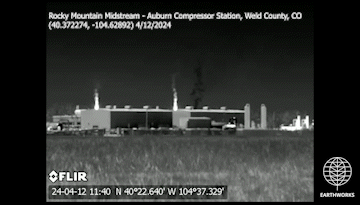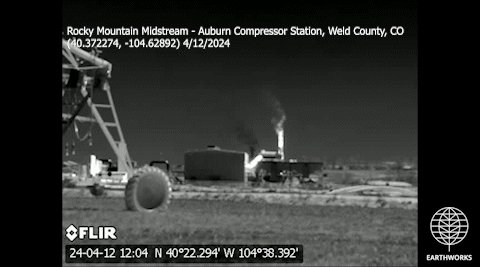|
Getting your Trinity Audio player ready...
|

Late last year, the Air Quality Control Commission (AQCC) adopted a new set of rules intended to reduce emissions from the midstream oil and gas sector, which includes facilities such as gas plants and compressor stations. The state of Colorado lauded the rules as “groundbreaking” because they rely on a novel (but unproven) cap and trade program that offers flexibility for operators and a lot of uncertainty for communities. Unfortunately, there is nothing new about prioritizing the interests of industry over those of communities in Colorado.
Under this new program, midstream operators will have to reduce their emissions to meet an emissions cap, which will represent the total amount of emissions they are allowed to emit from all of their facilities. If they reduce emissions below what they are allowed by their cap, they will generate credits that can be sold to other operators who are still emitting more than what is allowed by their caps.
This program offers flexibility to operators because it allows them to decide where and how they will achieve their required emissions reductions. Without any guardrails, a program like this would fail to uphold the principles of Colorado’s Environmental Justice Act because it would not require operators to specifically reduce emissions at facilities located in communities where the burden from pollution is greatest.
In an attempt to address this issue, the rules state that before operators can buy credits from other operators, they must first achieve at least 45% of their required emissions reductions by reducing emissions at facilities located in either:
1) Disproportionately impacted communities (DICs), which are communities that have a higher proportion of vulnerable populations exposed to environmental harms than other communities across the state.
OR
2) Counties located in the Front Range nonattainment area, which includes counties in the Denver metropolitan area and in Northern Colorado along the I-25 corridor that are failing to achieve federal standards for ozone, a dangerous air pollutant.
The problem with this framework should be immediately obvious: an operator could comply with these rules and not actually reduce emissions at any facilities located in DICs if they instead opted to reduce emissions only at facilities in the Front Range and not in DICs. Not only that, they could actually increase emissions at facilities located in DICs so long as they offset them elsewhere.


Two different angles on a plume of uncontrolled pollutants (black, unheated cloud of gas) being released from a compressor station located in a DIC in Weld County.
Colorado’s explanation for allowing operators to substitute emissions reductions at facilities in DICs for reductions at facilities in the nonattainment area is as follows: reducing emissions that contribute to ozone formation in the Front Range benefits air quality in all DICs located in the Front Range, even if emissions reductions are not occurring directly at facilities located in DICs.
A less generous take on why the state structured the program this way is because it prioritizes flexibility for operators over strict requirements to target emissions reductions at specific facilities in vulnerable communities which may be costly or difficult. In this way, the state is also deemphasizing the importance of reducing localized pollution in these communities, which should be a top priority given our observations of midstream emission in DICs.
Improving regional air quality in the Front Range is an important goal, and one that the state of Colorado should take seriously. However, positioning benefits to regional air quality as a substitute for measures that will directly address localized pollution in DICs is not an approach that prioritizes the health and safety of communities or that honors the spirit of the EJ Act.
Sadly, community members in DICs are accustomed to the state of Colorado incentivizing trade-offs like this, and it is precisely how sacrifice zones are created and maintained.
With these rules, Colorado takes another step forward in attempting to reduce harmful pollution from oil and gas. And, another step backward from a stated commitment to prioritizing environmental justice.
